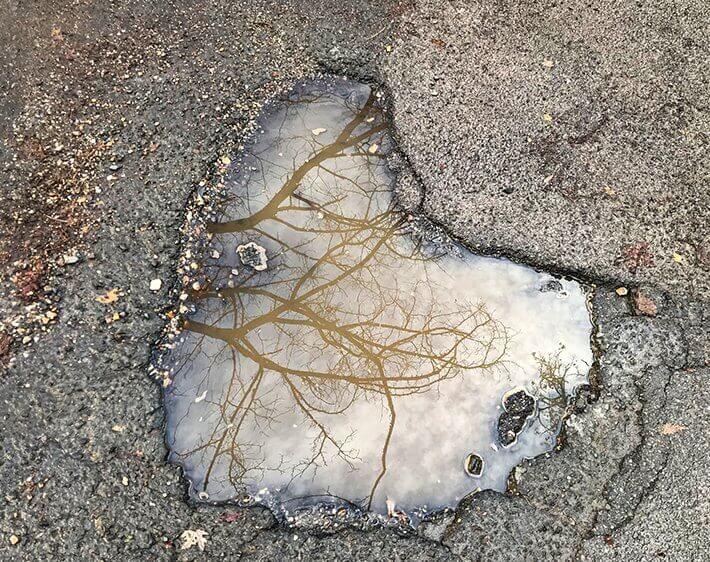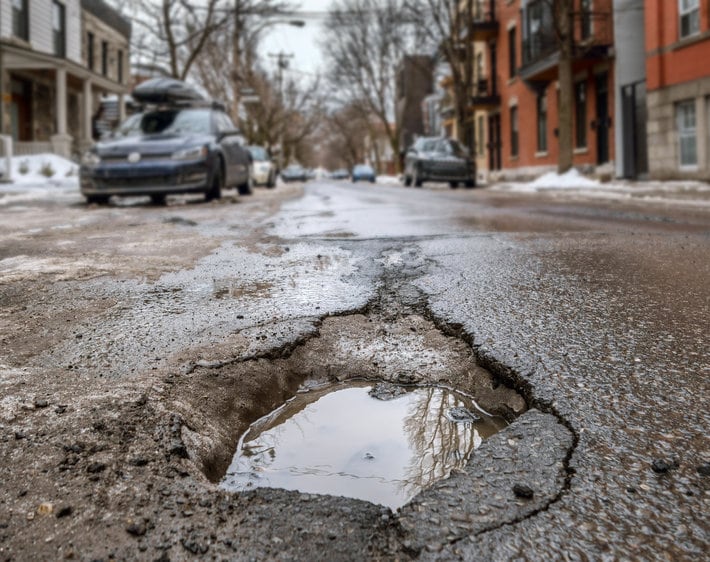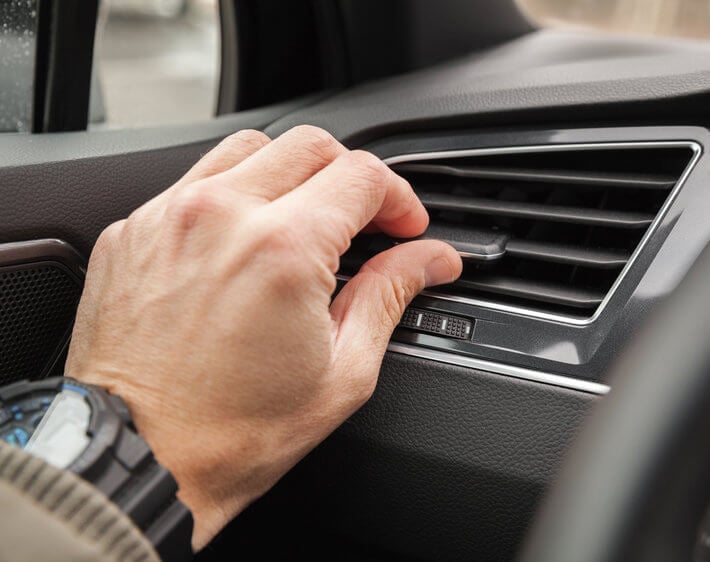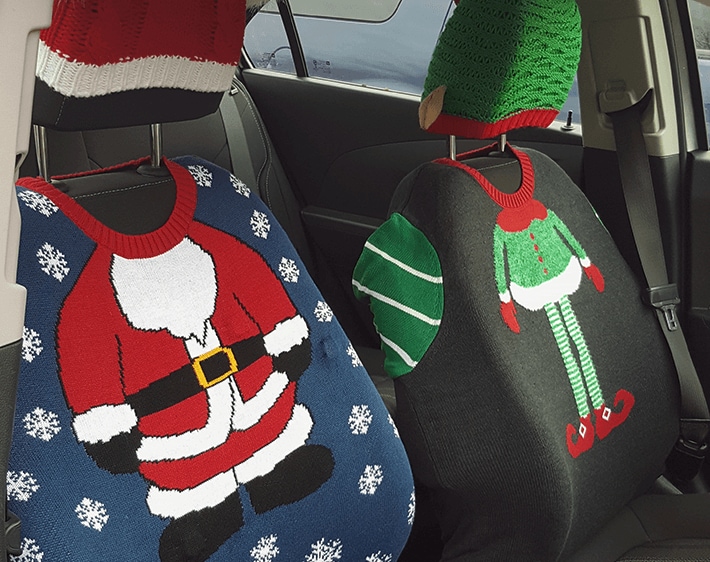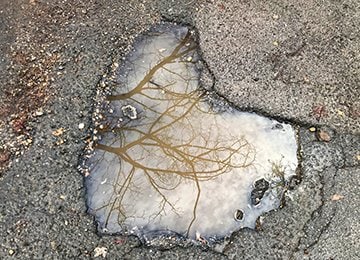 It’s a myth that potholes are only the bane of existence for drivers in cold climates. Anyone who’s ever traveled down a road in sunny, warm California can probably attest to that. So what’s the deal with these annoying hazards? Let’s dig in and see how they form.
It’s a myth that potholes are only the bane of existence for drivers in cold climates. Anyone who’s ever traveled down a road in sunny, warm California can probably attest to that. So what’s the deal with these annoying hazards? Let’s dig in and see how they form.
Freeze + Thaw = Potholes
The biggest cause of potholes comes from water – and the seasonal freeze-thaw pattern that a majority of the country experiences exasperates that. Water from melting snow and ice seep beneath the road surface through tiny cracks in the pavement. When temperatures drop overnight, the water freezes and expands, forcing the road to rise. Traffic then places stress on the weakened structure, widening existing cracks and allowing even more water to seep through. The whole cycle repeats until the pavement finally gives way and, BOOM!, a pothole is born.
Potholes in Warm Climates
Like we said earlier, states like Arizona, Louisiana and California aren’t immune to the headache of potholes. Los Angeles consistently ranks among cities with the worst road conditions. The reason? Yep, water. Even without the expansion of it freezing under the surface, water can still create gaps in the pavement’s soil base and soften the asphalt. Larger cracks in the surface from the hotter sun allow in even more water. The weight of passing cars and trucks then break up the weakened spot and, again, a pothole is formed. It’s even possible for a pothole to occur on a dirt road.
What to do?
Just because the road looks dry, doesn’t mean you should speed up. Reducing your speed gives you a better chance to spot potholes and drive around them. And even if you do hit one, you’re less likely to cause damage to your car at a lower speed. Also, be on the lookout for warning signs, like a puddle which could very well be a pothole in disguise, or a cracked road surface, which might be a pothole waiting to blow. Finally, make sure to report any potholes you see to your city’s department of transportation. The sooner you do, the sooner they’ll be repaired.
Even with added caution, pothole damage to your car can still happen. And if it does, a Tires Plus location near you can help with any needed repairs.
